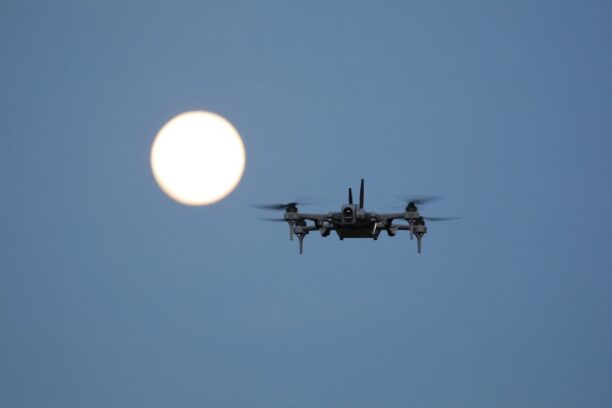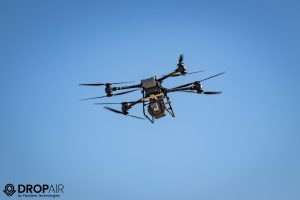Red Cat Holdings and Palladyne AI on the Drone Radio Show: Multi-Drone Collaboration
Imagine controlling a squadron of drones, each equipped with its unique intelligence, effortlessly working in tandem to detect threats, track vehicles, and communicate everything to you on a single display. These drones perform autonomously, without the need for a centralized control tower, thanks to their onboard intelligence and advanced AI communication capabilities. This innovation, introduced by Red Cat Holdings and Palladyne AI, was recently highlighted on the Drone Radio Show.
Welcome to the future generation of drone technology—where ‘multi-drone collaboration’ is not merely a term, but a practical and field-tested reality.
The Collaboration: Introducing the Innovators
Red Cat Holdings is renowned as a top drone technology provider, celebrated for their robust Teal 2 and Black Widow drones, which are designed for military readiness, agility, and field resilience.
Palladyne AI specializes in artificial intelligence, creating software that enhances the capability of robots and drones, achieving greater autonomy and adaptability through their flagship, Palladyne™ Pilot AI.
Together, they aim to integrate cutting-edge AI into every Teal drone, encouraging a drone ecosystem where these machines function collaboratively, akin to living teammates.
The Breakthrough: Achieving Autonomy Across Three Drones
Earlier this year, Red Cat and Palladyne AI achieved a milestone with an autonomous, cross-platform collaborative flight, featuring three different drones – namely Red Cat’s Teal 2 and Black Widow. This test stood out due to its:
- True Decentralization: Operating with onboard edge computing and constrained communications, each drone coordinated independently without relying on a master control station.
- Live Object Detection and Tracking: Utilizing Palladyne™ Pilot AI, the drones jointly scanned environments to identify and track both stationary and moving targets.
- Effortless Control: Managed by a single operator who received comprehensive situational awareness through an integrated console, replacing the traditional team of pilots and analysts.
‘Three birds, 2 drones, and an AI, each unique, seamlessly operated in unison, eliminating the need for central control or complex manpower.’
The Significance: Real-World Impact
Military and Defense:
- Enhanced Situational Awareness: Multi-drone perspectives deliver a comprehensive view to command centers, improving threat detection and mission strategy.
- Efficiency: Reduces manpower needs and cognitive load by allowing a single operator to manage multiple drones.
- Resilience: Operations become less susceptible to failures with no single point of control, offering robust defense against interference or technical issues.
Commercial Applications:
- Scalability: This intelligent collaboration can be applied in various sectors, such as monitoring critical infrastructure, conducting search and rescue operations, or performing agricultural surveys.
- Adaptability: Easily integrated with existing fleets, enhancing capabilities without a complete overhaul.
The Technology Behind: What’s Driving the Collaboration?
Palladyne™ Pilot AI: The Decision-Maker
The Palladyne™ Pilot AI acts as the cognitive engine for drones, facilitating:
- Autonomous Navigation: Drones independently decide their path, objectives, and methods to avoid threats.
- Collaborative Sensing: Sharing insights and functioning as a unified team.
- Edge Computing: Processing occurs directly on the drones, mitigating bandwidth use and enhancing communication reliability.
Hardware: Teal 2 and Black Widow
Both models are designed for modularity and durability, conducive for rapid deployment, and are Blue UAS certified, ensuring reliability for US Department of Defense needs.
Evolutionary Timeline: From Testing to Implementation
The path to this innovation included:
- December 2024: Conducted the first autonomous single-drone test for AI-powered detection.
- January 2025: Demonstrated two-drone cooperative operations.
- Spring 2025: Achieved a three-drone coordinated mission, showcasing advanced collective intelligence.
Expert Insights: Perspective from the Frontlines
Matt Vogt, Palladyne AI’s Chief Revenue Officer, stated that the milestone reflects progress in multi-drone interoperability and that this autonomous solution is a game-changer for military operations.
Geoff Hitchcock, Red Cat’s Chief Revenue Officer, explained the importance of reliability in their systems for complex missions.
Stan Nowak, Red Cat’s VP of Marketing, emphasized reducing operator burden by offering repairable, easy-to-use drones.
Drone Swarms: Beyond Fiction to Reality
The concept of swarming drones has fascinated many as seen in films and media. Red Cat and Palladyne have made this a battlefield-ready reality.
Looking ahead:
- Expect a rise in larger, more diverse swarms integrating ground and aerial robots.
- Civilian applications, from fire surveillance to logistics, are imminent.
- AI advancements will continue to evolve with adaptive learning and multi-language deployments.
Tech for Humans: Why It’s Significant
Red Cat and Palladyne’s technology philosophy centers around human operators by ensuring:
- Usability: Minimal training required with intuitive interfaces.
- Safety: Reduces risk exposure for personnel.
- Transparency: Clear mission feedback.
Their goal is to enhance human capabilities rather than replace them, providing multi-drone intelligence and robustness without necessitating expertise from operators.
Applications in Combat and Commerce
Military Scenario:
A lone operator manages a three-drone team in urban operations, with drones covering different vantage points and continuing operations independently if communication falters.
Commercial Use:
During emergencies like forest fires, a company deploys drones to autonomously manage zones, identify hotspots, and direct ground efforts in real-time.
Conclusion: Watching the Drone Industry’s New Standards
Once seen only in thrillers, multi-drone collaboration is now tangible and poised to transform aerial autonomous operations. Through their innovative hardware and intelligent AI, Red Cat Holdings and Palladyne AI are elevating the future of drones, not just in terms of speed or distance, but through collective intelligence and safety.
As drone swarms expand into mainstream applications, expect increased collaboration from the Red Cat and Palladyne alliance, facilitating widespread drone integration across various sectors.













